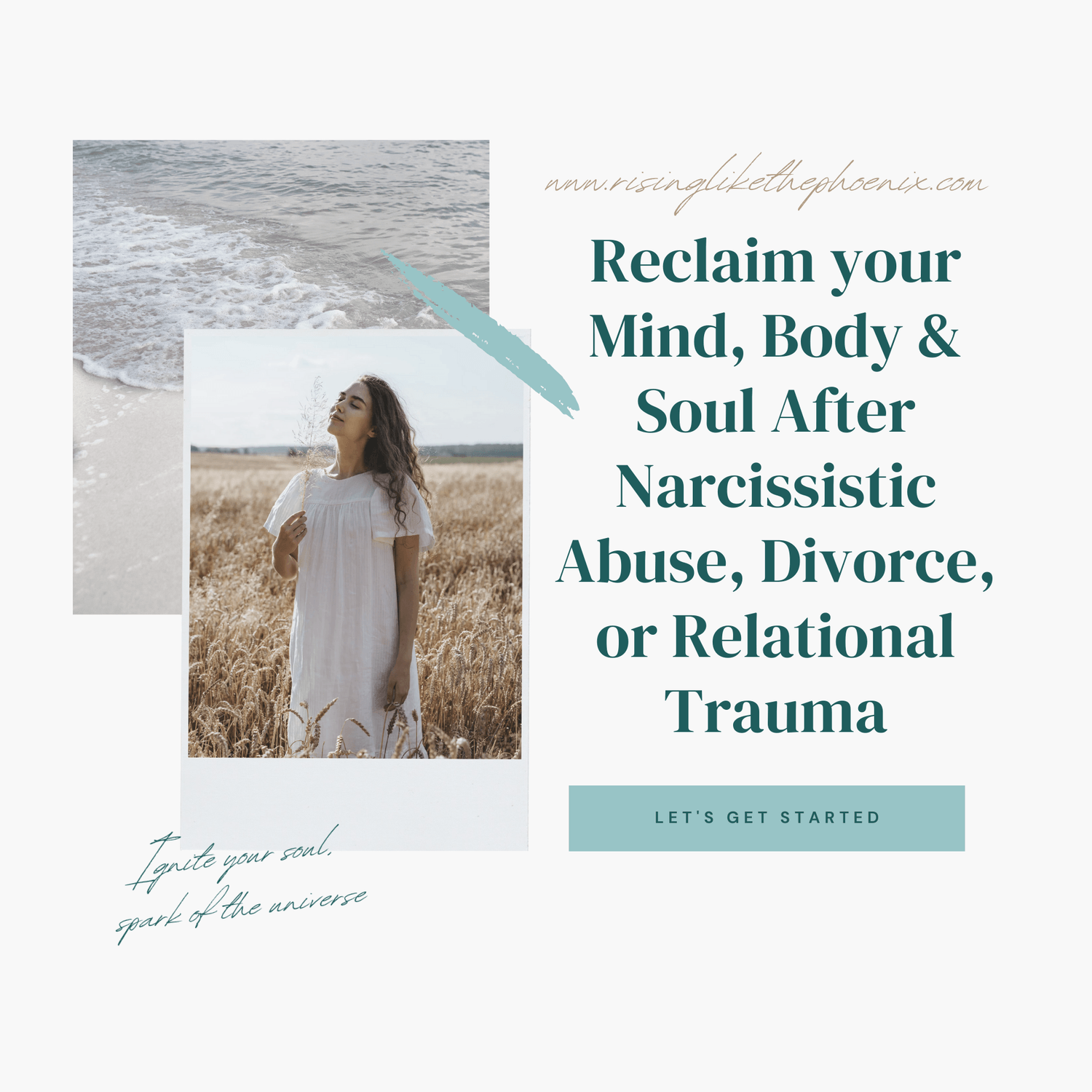How to Fully Move On from a Narcissist
Introduction: Facing the Hardest Truth
I want to start with something that may sting at first, but it is essential to your healing: the narcissist never truly loved you.
I know how painful it is to hear that. For so many of us, it feels like our whole world collapses with those words. But here’s the truth: the relationship was never about love. It was about control, manipulation, and extracting your light for their gain.
The gifts, the romantic gestures, the constant texting, the “soulmate” speeches, they weren’t real intimacy. They were tools. Scripts the narcissist has used on others before you and will use again. And here’s the most important part: it was never your fault.
Accepting this truth is the first step to freedom. Once you understand that the relationship was built on illusion, you can stop blaming yourself and start reclaiming your power.
Step One: Go No Contact (or Grey Rock if you must)
The most powerful action you can take is to cut off their access to you. Block them on every channel, your phone, social media, email, and even LinkedIn. Anywhere they might try to sneak back in.
And let’s clear up a common misconception: No Contact isn’t revenge. You’re not doing it to hurt the narcissist. You’re doing it to protect yourself. Every day you don’t answer their texts, every moment you resist checking their profile, you’re reclaiming a piece of your freedom.
But what if No Contact isn’t possible? Many survivors share children, work, or family ties with the narcissist. In these cases, the next best strategy is the Grey Rock method. Keep all interactions neutral, minimal, and emotion-free. Limit communication to only what’s absolutely necessary.
Remember: The less energy you give them, the less grip they have on your life.
Step Two: Clear the Clutter of Them
Narcissists weave themselves into your environment on purpose. The songs they sent you, the jewelry they bought, the coffee shop you always went to together, these are psychological anchors designed to haunt you.

This is why clearing reminders of them is a crucial step. Yes, it’s difficult. You may have to give away gifts you once cherished or avoid places that feel too heavy. But every object or ritual you release makes space for your healing.
Try these small shifts:
Donate or sell gifts that feel tainted.
Delete old playlists or texts.
Take a new route to work.
Order a different coffee drink.
Rearrange your space so it feels like yours again.
Each step might feel tiny, but together they create distance between you and the person who caused you harm. With every item you let go of, you lighten your load.
Step Three: Reclaim Yourself
Here’s something many survivors don’t realize: what you fell in love with wasn’t them,it was a reflection of yourself.
Narcissists are expert mirrors. They reflected back your kindness, your humor, your quirks, and your dreams. That’s why it felt so intoxicating; it felt like home.
Now it’s time to turn that mirror back toward you. Ask yourself:
Where did I let my boundaries slip?
What wound in me was longing for healing?
What qualities in me deserve to be cherished by someone genuine?
This isn’t about blame. It’s about rediscovery. Abuse doesn’t define you; it reveals how deeply you value love, trust, and connection. Those are beautiful qualities. And now, you get to protect them, honor them, and share them with people who truly deserve you.
5 Steps to Reclaim Your Life
A practical guide to reclaiming your confidence, setting boundaries, and moving forward—without second-guessing yourself.
Step Four: Build Your Fortress of Peace
Healing after narcissistic abuse is like constructing a fortress around your heart and mind. Not to keep everyone out, but to ensure only safe, loving people have access to your inner world.
Picture it this way:
Your boundaries are the walls. Strong, unshakable, and clearly marked.
Your intuition is the gatekeeper. It decides who gets in.
Your self-respect is the watchtower. It spots red flags from miles away.
From this stronghold, you can lean into healthy friendships, create joyful routines, and live without the constant fear of manipulation. You can laugh, travel, explore, and rebuild a life that is yours alone.

Step Five: Rise Like the Phoenix
Narcissistic abuse can leave you in fog and confusion, but it can also ignite transformation. What nearly destroyed you can become the fire that rebirths you.
You were targeted not because you are weak, but because you are empathetic, kind, and loyal. These are strengths, not flaws. Now, with new boundaries and self-knowledge, you can channel those qualities into building a thriving future.
This is your phoenix moment. You are no longer tethered to someone who was only a shell of a human being. You are free to rise into the fullness of who you were always meant to be.
Practical Tips for Moving On
To put this into action, here are some healing practices you can start today:
Journal daily to process feelings and track your growth.
Create a “no-contact” script for when temptation hits, something like, “Answering will only cost me my peace.”
Replace old rituals with new ones: a morning walk, a gratitude list, a fresh playlist.
Seek support through therapy, coaching, or survivor groups. You don’t have to walk this path alone.
Celebrate milestones, whether it’s one week, one month, or one year of No Contact.
Healing isn’t linear, and that’s okay. What matters is that you’re moving forward, one step at a time.
Final Thought
The narcissist never truly loved you, but that doesn’t mean love is gone from your life. In fact, the deepest love is just beginning: the love you will learn to cultivate for yourself.
So every time the doubts whisper, remind yourself:
I am free. I am strong. And I will rise.
Frequently Asked Questions
Missing them doesn’t mean you want them back; it means you’re human. You miss the illusion, not the reality. Be gentle with yourself and redirect those feelings toward self-care.
Research and experience show that true, lasting change is extremely rare. Don’t waste your life waiting for someone who isn’t capable of loving you the way you deserve.
There’s no one-size-fits-all timeline. Healing depends on your circumstances, support system, and willingness to do the inner work. Focus on progress, not perfection.
Use the Grey Rock method. Keep interactions short, factual, and free of emotion. Protect your energy as much as possible.
Diane’s upcoming course, A Girlfriends' Guide to the Other Side, dives deeper into practical boundary-setting strategies and offers exercises to help you strengthen this vital skill.
If you want to be notified of its launch early next year, register for our Rise Weekly Newsletter, where Diane will keep you informed weekly of its progress and other suggestions toward your healing journey.
Remember, you are not alone
Further Resources:

Hi, I’m Diane – and I’m so glad you’re here
Diane is the author of A Girlfriend’s Guide to the Other Side: Reclaim Your Mind, Body, and Soul After Narcissistic Abuse, Divorce, or Relational Trauma.
After surviving the wreckage of a controlling relationship that stripped her identity, she turned her pain into purpose. Through her book, course, and community, Diane now guides women on the journey of rebuilding self-worth, setting healthy boundaries, and reclaiming their lives.
Her mission is simple: to remind every woman that healing is possible, and that your future can be brighter than your past.
Categories
Rise Weekly Newsletter
Because healing isn’t just about surviving, it’s about rising. Rise Weekly delivers empowering insights, gentle reminders, and soulful tools to help you reclaim your strength, set powerful boundaries, and rebuild a life that feels like you. If you're ready to rise above trauma and step into your next chapter with clarity and courage - this is your space.
Created by © Suzanne Startari with systeme.io





